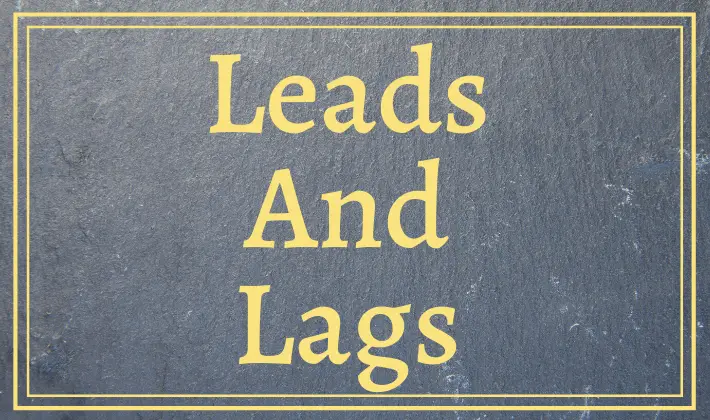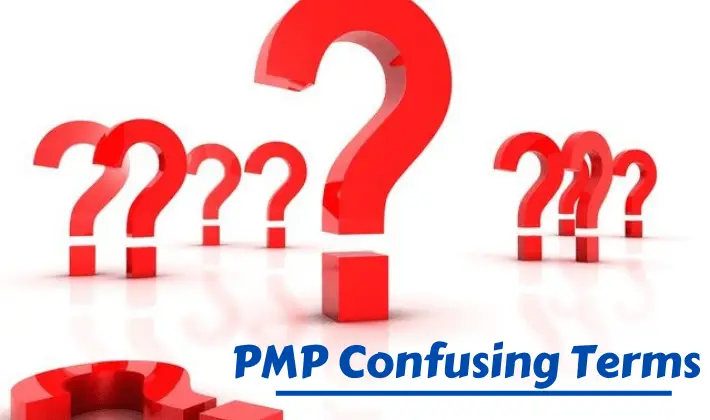Project Assumption is a factor in planning process that is considered to be true, real or certain often without any proof or demonstration.
It simply means that some things are supposed to be true. Human beings are presumptuous and work on suppositions. Sometimes these suppositions come out to be true while at other times they prove to be false. Hence, all assumptions should be carefully made and analyzed.
Let us understand how assumptions are used in project management with the help of an example.
Assumptions in Project Management: Definition and Examples
Project Assumptions are events or circumstances that are expected to occur during life-cycle of a project. They are considered to be true, real or certain without requiring any proof or demonstration.
You can also look at Max Wideman’s Glossary for the definition of Project Assumptions.
Assumptions in project management are like an educated guess. They can be derived from prior experiences and lessons learned from previous endeavors.
A large part of the plan is based on the assumptions. Reasonable assumptions can help in making a good plan whereas poor assumptions can derail the project.
Project Assumption Example
Let’s understand project assumptions by looking at an example.
Here is a situation – Project team needs approval of design document from the customer. The project cannot move ahead without this approval.
In order to plan, the project team might assume that approval will happen 2 weeks after the design document is submitted.
There is no surety if the customer will give approval within 2 weeks. Only time will tell if the above assumption comes out to be true. However, project plan is prepared based on such type of assumptions.
Project team must do their due diligence and complete analysis before documenting assumptions. They should talk to different stakeholders to verify their assumptions.
Key Points of Project Assumptions
Here are a few key points about project assumptions:
- Assumptions are believed to be true.
- They are stated without any empirical evidence.
- They are derived from either through personal experience or from organizational historical data.
- All assumptions are potential risks. A poor assumption can be detrimental for the project. Assumption Analysis is one of the important techniques for Risk Identification.
- They should be well documented and well communicated. Poor communication of assumptions can, sometimes, lead to project failure.
- A separate Assumptions Log should be made for documenting assumptions.
- Bigger assumptions must be validated with important project stakeholders.
Difference between Project Assumptions and Constraints
A project constraint is any factor that hinders or restricts the options of the project team.
Many project managers are confused about the difference between assumptions and constraints. They are simple English words and there is nothing confusing about them.
Constraints are different from assumptions because they limit the choices of a project team.
Let’s us revisit the previous example to distinguish between these two terms
The situation was – Project team needs approval of design document from the customer. The project cannot move ahead without this approval.
The situation itself is a constraint because the project team is cannot do the future work without getting an approval from the customer.
So, the same situation can be treated as a constraint if it is reworded.
You can read my other article on constraints in project management to learn more about them.
Difference between Project Assumptions and Dependencies
A project dependency can defined as an association between two activities, in which one activity requires input from the other.
Just like the assumptions and constraints, project dependency too is a simple English word. If you can understand its English meaning, you will be able to understand the difference between assumptions and dependencies.
Dependencies are different from assumptions because they are between two activities.
Let’s us revisit the previous example to distinguish between these two terms
The situation was – Project team needs approval of design document from the customer. The project cannot move ahead without this approval.
Here, the future activities of project are dependent on a customer activity viz. Design approval.
Again, the same situation can be treated as a dependency if it is reworded.
You can read my other article on dependencies in project management to learn more about them.
Difference between Project Assumptions and Risks
A project risk is an uncertain event or condition that can have positive or negative impact on at least one of the project objectives.
Just like the other project management terms, project risk too is a simple English word. If you can understand its English meaning, you will be able to understand the difference between assumptions and risks.
Risks are different from assumptions because they can impact one or more project objectives. Every assumption is a potential risk because if the an assumption goes wrong it can impact the project.
Let’s us revisit the previous example to distinguish between these two terms
The situation was – Project team needs approval of design document from the customer. The project cannot move ahead without this approval.
Here the assumption could be that the project team expects that the approval will happen 2 weeks after the design document is submitted. However, if the approval doesn’t happen in 2 weeks then the project might get delayed.
So, the we can write the risk statement as “the project might get delayed of the design approval doesn’t happen in 2 weeks”.
Again, the same situation can be treated as a risk if it is reworded.
You can read my other article on risks in project management to learn more about them.
Over To You
A question for the readers. Is following statement an assumption or a fact?
“There would always be few Assumptions in every project”.
I would love to hear your thoughts.




![Work Package In Project Management [Activity Examples]](https://www.pmbypm.com/wp-content/uploads/2013/12/Work-Package-1.png)
![4 Types of Dependencies In Project Management [Examples]](https://www.pmbypm.com/wp-content/uploads/2014/06/4-types-of-project-dependencies.png)


Thanks for clarifying the difference between the three terms with this post. It’s definitely confusing at times, especially using textbook definitions (like lawyer’s legalese!). Simple English words made difficult! And, in practice, they may often be used interchangeably without consequences. But is good to reflect at what the differences really are. I look forward to the next articles on Dependency and Constraint.
Thanks Peter. I have posted article on Constraints. Please provide your valuable feedback for that as well. You can look forward to my article on Dependencies in a day or two. I am planning to write a fourth article in series. You can also subscribe to blog posts by entering your email id at top right of this website.
Well its a good feedback on Assumptions. It is true that sometimes even simple terms in project management seems like same & replacable to each other.
regarding your question, believe answer is “Fact” since in each project there are one pe the other Assumption without which we may not plan & schedule the activities.
Kindly provide your feedback on this reply. Thanks.
Hi Harihar, Thanks for your comment. I agree. Scheduling, Budgeting etc. are usually not done without taking assumptions.
what could be the assumption on the project of growing nuts and vegetable and make peanut butter. I would like to realy understand this term correctly.
Assumption 1 – Availability of fertile grounds
Assumption 2 – Availability of seeds for a reasonable cost
Assumption 3 – Timely rains (depending on the country where you are growing the nuts and vegetables)
Assumption 4 – No floods during the period that the crop matures
etc…
what are assumptions of agricultural inputs business
Hi Julius, You can look at the previous comment.
Hi praveen,
What could be the assumptions for a project on launching a new payday loan product in the state of Chicago?
Thanks in advance!
Hi Noel,
I have very little knowledge of loan products and Chicago. Since every project is unique, you would be the best person to determine the assumption for your project. Having said that let me give you few hints for finding the assumptions:
1. If you do not have the market research data, there will be assumptions related to product success, market penetration, number of potential customers, number of actual customers, demographics etc.
2. There could be assumptions related to timeframe, cost, marketing strategy etc. for launching your product.
3. There could be assumption related to customer issues, customer support etc.
Basically, assumptions will come whenever you do not have hard data (evidence). If you have data (current or historical), then it will not be an assumption.
Hope it helps.
BR
Praveen.
hello sir,
i have a scenario ,can you suggest me what might be assumptions here?
Two small departments, which currently are separate, will be merged into one large department. As a result, it is necessary to combine these two small departments’ information systems.
Your job is to manage the project to combine two employee databases. The Department of Trade has just under 5,000 employees, while the Department of Business has approximately 8,000 personnel. There are several challenges with this project. Firstly, the two departments use totally different database technologies. Secondly, the employee data in both employee databases are known to be very ‘dirty’: that is, each database contains many inaccuracies and there is much information missing. For example, a survey has found that employee addresses are wrong in about a 25% of the Department of Trade staff records and 40% of Department of Business records. Thirdly, there are weaknesses in relation to the security of both employee databases. Indeed, employee data from the Department of Trade is believed to have been stolen by hackers. Subsequently, the government wants to more effectively protect data within the new combined system.
Thanks a lot.
what should be the assumptions of a new first person shooter game project
Hi Praveen,
Adding to what you have already mentioned.
Project Scope Statement, after it gets approved, becomes a part of the scope baseline. So assumptions, constraints and whatever else is in the Project Scope Statement becomes a reference for the project.
The distinction between charter and scope statement is not only based on high level and low level of detail.
Best Regards,
Hi Almesh,
Thanks for the comment. Project charter & scope statement are very different documents. There is no comparison. Project charter authorizes the project whereas scope statement provides complete details of the project work at hand.
BR
Hi Praveen,
An interesting article. I’ve been working as a PMO Manager for a number of years and I always remind my teams that “Assumptions are the mother of all…..” – you may know the rest. Assumptions are fine during the planning stage, but personally, I don’t allow them to be part of my PMS. I always understood the need for them for the deal teams who potentially don’t have access to all the relevant data and they need to make assumptions from a cost perspective, but when delivering against a defined scope, each assumption should all be validated at the outset and translated into the appropriate control component (e.g. risk, issue, change and / or dependency). Personally, I prefer not to have assumptions as a working principle as these will have the real potential to jeopardise the successful delivery of a project if working against a working assumption that is fundamentally wrong. Just my view of the world. Thanks, Jens
Jen, I completely agree. Many times, assumptions become excuse for poor project management. Assumptions have a place in PM bu they should be properly validated.
BR, Praveen.
what are the possible ways to develop assumptions
Aiah,
Assumptions are never developed. They just come because of planning and other factors. You identify and note the assumptions.
BR, Praveen.